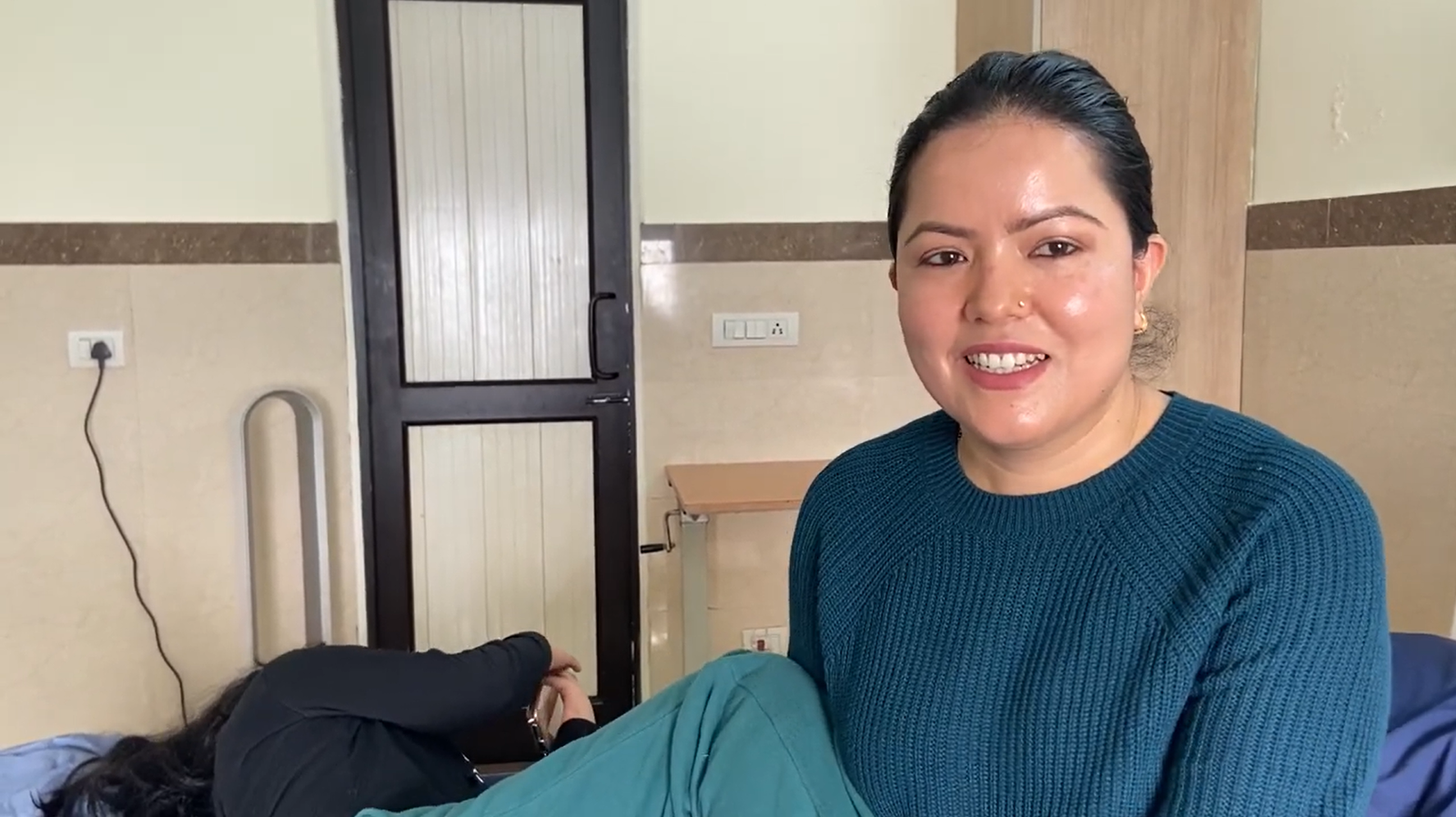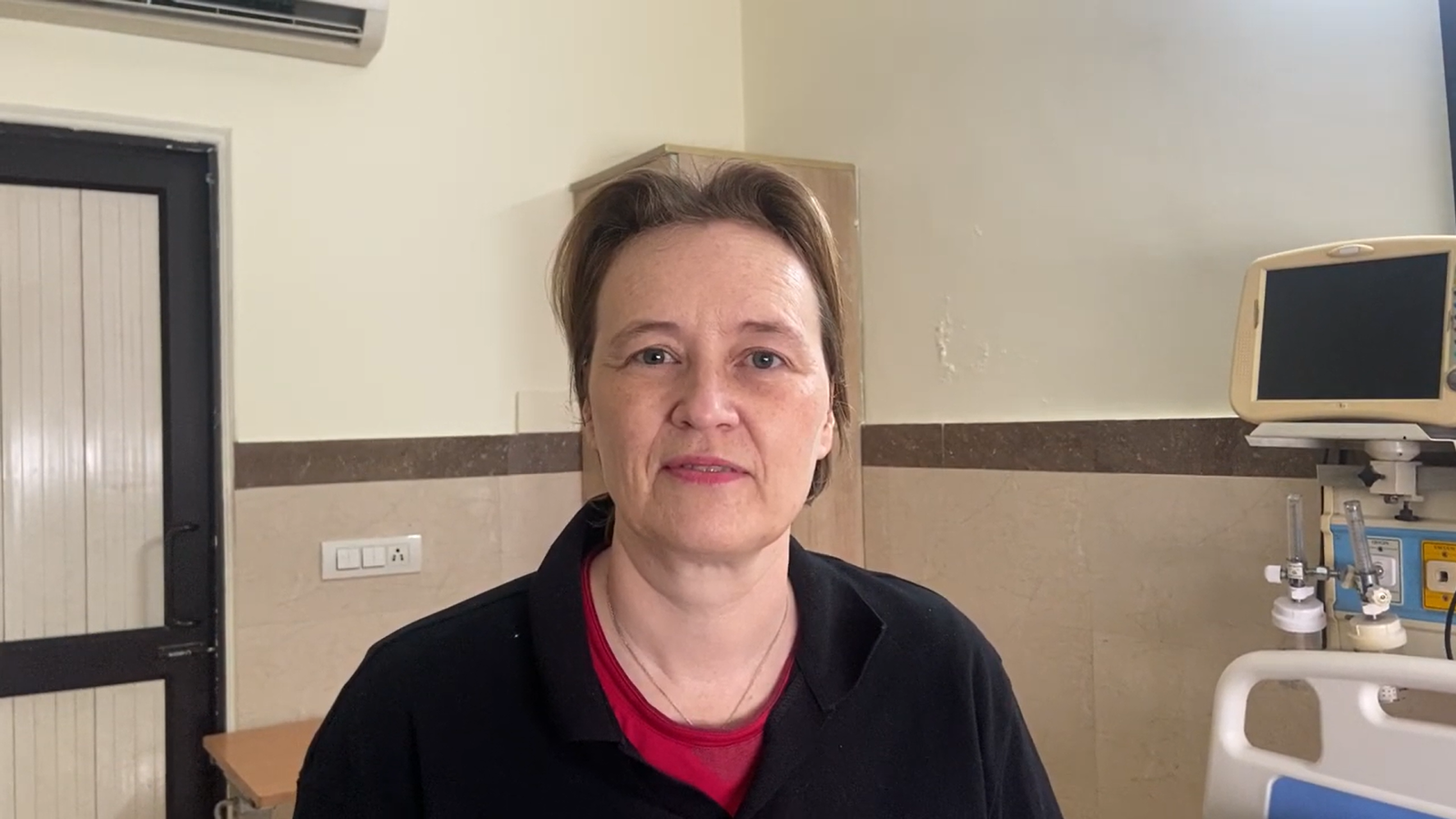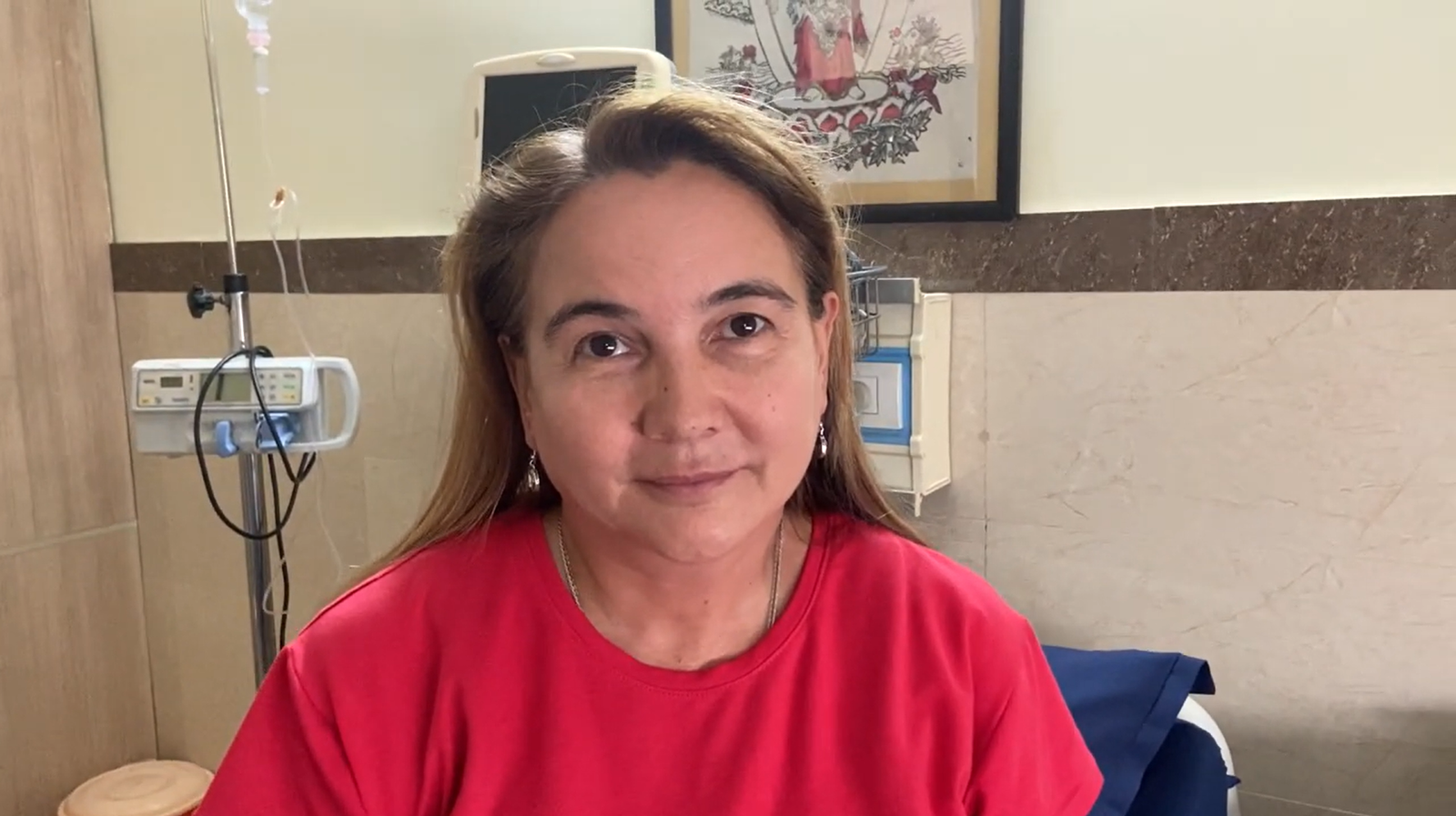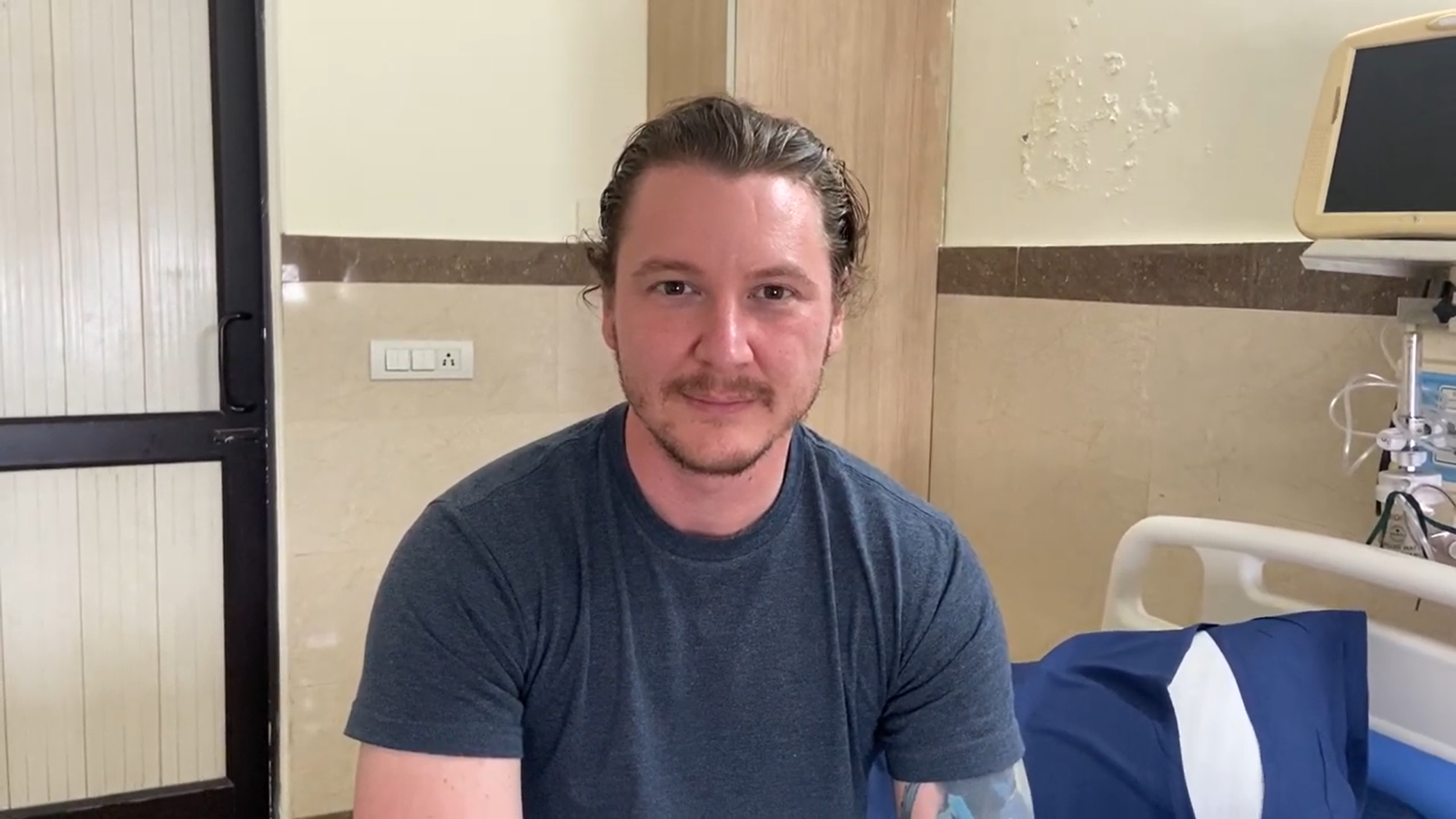- H-23/ B Abul Fazal Enclave, New Delhi - 110025, INDIA
Call Us (Indian)
(+91 ) 7827791242
Call Us (International)
(+91 ) 7827791242
Email Us
info@globlaregenex.com
(+91 ) 7827791242
(+91 ) 7827791242
info@globlaregenex.com
Eye surgery is a way of removing, repairing, or manipulating your eye and surrounding tissues. The physical alteration, removal, or repair of organs and tissues in order to treat disease is referred to as surgery. Surgery frequently involves making incisions on organs. Your eye is the organ and the accompanying muscles and nerves are the tissues in the context of eye surgery. Ocular surgery and ophthalmic surgery are other terms for eye surgery. Surgeons of the eyes are ophthalmologists.
Vision can be improved with eye surgery. For instance, surgery to treat cataracts, significantly sagging eyelids, and refractive problems improves eyesight.
The best kind of eye surgery for you is the one that addresses your medical condition. Certain types of eye procedures have improved recently, becoming the “best” for particular instances thanks to the use of robots and lasers.
Most common eye procedures are extremely safe. As with any surgery, there are hazards involved. Depending on the procedure, there are different risks or problems from eye surgery. In general, the hazards can include bleeding, infection, glare or halos perception, and dry eyes.
Several different types of eye surgery can improve your vision. They range from medically required vision therapies that stop blindness or halt degenerative illnesses to cosmetic procedures that correct refractive errors like nearsightedness. Given below are some of the common forms of eye surgeries:
LASIK (Laser-Assisted in Situ Keratomileusis: It is a refractive operation that uses a laser to reshape the cornea in order to correct nearsightedness, farsightedness, and astigmatism.
PRK, or Photorefractive Keratectomy: It is a different kind of refractive surgery that is comparable to LASIK in that the cornea’s outer layer (the epithelium) is removed before the underlying corneal tissue is reshaped with a laser.
Cataract surgery: To restore clear vision, the clouded lens of the eye is removed and replaced with an artificial intraocular lens (IOL).
Surgery for Glaucoma: A number of surgical techniques can be used to treat glaucoma by enhancing the fluid drainage from the eye or by lowering the amount of fluid produced in order to lower intraocular pressure.
Corneal Transplant Surgery: corneal transplant surgery is also referred to as keratoplasty, corneal transplant surgery restores vision by using healthy donor tissue to replace a diseased or damaged cornea.
Vitrectomy: A vitreous gel excision is a medical treatment that can be used to address diseases like diabetic retinopathy, macular holes, and retinal detachment.
Strabismus Surgery: The purpose of surgery for strabismus is to realign the eyes by modifying the muscles that control eye movement.
Ptosis Repair: To treat drooping (ptosis), ptosis repair surgery entails repositioning or strengthening the muscles or tissues that elevate the upper eyelid.
Eye surgery is also called ocular or ophthalmic surgery. It is performed to address a range of disorders affecting the eye and its surrounding structures. Among the common causes of eye surgery are:
Cataracts: A cataract is a clouding of the natural lens of the eye that causes blurred vision. One typical treatment is surgery to remove the clouded lens and replace it with an artificial lens.
Refractive Errors: Procedures like LASIK, PRK, or implanted contact lenses (ICL) can be used to treat conditions like nearsightedness (myopia), farsightedness (hyperopia), and astigmatism.
Glaucoma: A collection of eye disorders known as glaucoma harms the optic nerve, frequently as a result of high intraocular pressure. To decrease intraocular pressure and enhance fluid outflow, surgery can be required.
Retinal Disorders: Surgical procedures may be necessary to stabilize or restore the retina in cases of retinal detachment, macular degeneration, or diabetic retinopathy.
Corneal Disorders: In order to replace diseased or damaged corneal tissue, patients with corneal ulcers, keratoconus, or corneal dystrophies may require corneal transplant surgery.
Ptosis: Ptosis is the term for the upper eyelid’s sagging, which can occasionally cause visual problems. Tightening the muscles or tissues supporting the eyelid may need surgery.
Eyelid Disorders: Surgical correction may be necessary for conditions such as eyelid tumors, ectropion (an outward-turning eyelid), and entropion (an inward-turning eyelid).
Depending on the underlying problem being treated, people may have a variety of symptoms prior to having eye surgery. The following are a few typical signs that could lead to an eye surgery recommendation:
Reduced Vision: Conditions including cataracts, macular degeneration, or corneal problems that may need surgical intervention may be indicated by blurred vision, trouble focusing, or a progressive reduction in vision.
Eye Pain or Discomfort: Conditions including glaucoma, corneal ulcers, or eye injuries may be linked to persistent or severe eye pain, discomfort, or pressure, which may require surgical intervention.
Light Sensitivity: Conditions including uveitis, corneal abrasions, or retinal abnormalities can cause increased sensitivity to light, or photophobia, which may need surgical management to relieve symptoms.
Redness or Irritation: Prolonged redness, irritation, or inflammation of the eyes may be a sign of diseases including blepharitis, scleritis, or conjunctivitis, which in some circumstances may need surgery.
Double Vision: The appearance of double vision or distorted vision can be a sign of neurological problems, cranial nerve palsies, or strabismus. These conditions can be treated by eye muscle surgery or other operations.
Flashes or Floaters: The occurrence of flashes or floaters—spots or specks that move across the visual field—may be a sign of a retinal detachment, vitreous separation, or other retinal problems that may need immediate surgical intervention.
Eye Misalignment: Abnormal eye movements or misalignment of the eyes (strabismus) may be signs of underlying disorders that need to be surgically corrected in order to enhance alignment and vision.
Ptosis: Age-related changes, nerve damage, or muscle weakness can cause ptosis, which is drooping of the top eyelid that may require surgical repair to restore appearance and eyesight.
Weeping or Discharge: Conditions including clogged tear ducts, eyelid problems, or eye infections may be linked to excessive weeping, discharge, or crusting around the eyes. These conditions may need to be treated surgically.
Vision Disturbances: Other vision disturbances, such as changes in peripheral vision, reading or focusing difficulties, or halos surrounding lights, may be signs of underlying eye disorders that call for surgery.
To determine whether you have a cataract, your eye doctor will review your medical history and symptoms. They also will perform an eye exam. At Global Regenex our doctor does several tests, including:
Vision test: A vision test, also called a visual acuity test, uses an eye chart to measure how well you can read a series of letters. One eye is tested at a time, while the other eye is covered. A chart or a viewing device with letters that get smaller is used. With this, your eye doctor determines if you have 20/20 vision or if you have trouble seeing.
Eye structure exam: An eye structure exam also called a slit lamp, allows your eye doctor to see the structures at the front of your eye up close. It’s called a slit lamp because it uses an intense line of light, a slit, to light up the structures in your eye. The slit allows your doctor to view these structures in small sections. This makes it easier to find anything that may be wrong.
Retinal exam: A retinal exam looks at the back of your eyes, called the retina. To prepare for a retinal exam, your eye doctor puts drops in your eyes to open your pupils wide, called dilation. This makes it easier to see the retina. Using a slit lamp or a special device called an ophthalmoscope, your eye doctor can examine your lens for signs of a cataract.
Fluid pressure test: This test, also called applanation tonometry, measures fluid pressure in your eye. There are multiple different devices available to do this.
Treatment for eye surgery varies depending on the specific condition being addressed. The most common type of eye surgery, a cataract entails taking out the hazy lens and replacing it with an artificial intraocular lens (IOL) to bring back vision. Refractive operations, like LASIK and PRK, use a laser to reshape the cornea in order to treat astigmatism, farsightedness, and nearsightedness.
In order to prevent damage to the optic nerve, glaucoma surgery tries to reduce intraocular pressure by techniques like trabeculectomy or tube shunt implantation. In order to improve eyesight, corneal transplant surgery, also referred to as keratoplasty, replaces unhealthy or damaged corneal tissue with healthy donor tissue.
A vitrectomy is a surgical treatment used to remove the vitreous get from the eye. It can be used to treat problems like macular holes, diabetic retinopathy, and retinal detachment. The muscles that control eye movement are adjusted during strabismus surgery to correct misalignment of the eyes.
Ptosis correction surgery involves repositioning or tightening the muscles or tissues to raise the sagging upper eyelids. Blepharoplasty, often known as eyelid surgery, is a procedure that can be done for functional or cosmetic purposes to enhance to look or feel of the eyelids.
Tear duct surgery, also known as dacryocystorhinostomy, relieves crying brought on by clogged tear ducts by establishing a new drainage channel for tears. Every kind of eye surgery necessitates a thorough assessment and taking into account the patient’s particular requirements, medical background, and general state of eye health.
Before having any surgery, patients should speak with their ophthalmologist or eye surgeon about the advantages, disadvantages, and available options. In order to provide the best possible results and recuperation, post-operative care and follow-up sessions are also essential.
Our comprehensive surgery program for corrective eye surgery is structured as follows: patients can leave for the destination the next day after completing supportive therapy. The program spans three days. The daily schedule is:
1st day of the operation for eye surgery:
Complying with the guidelines provided by the physician during laboratory and clinical assessment procedures
Seeking out supportive therapy
On the second day of the eye surgery process, patients will:
Go through the eye surgery operation
Day 3:
Things to Remember
What are the most common eye surgeries?
Laser-assisted in situ keratomileusis (LASIK), is a sort of laser surgery that reshapes the cornea to increase visual acuity and is one of the most frequently done types of refractive surgery.
What happens after eye surgery?
Most of the time, there won’t be any discomfort, and your eyesight will return fast. Painkillers or eye drops may be administered to you in order to ensure your comfort for a few hours following the treatment. Until your eye heals, your eye doctor may also advise you to cover your eye at night with a shield.
What helps eye pain after surgery?
When necessary, take over-the-counter pain relievers. After surgery, stay indoors with dark shades and protective eye shields, and spend the first several days recovering from strong light exposure. After surgery, schedule many hours of sleep because your eyes will be at their most sensitive.
Which type of eye surgery is best?
Three safe, efficient, and scientifically established laser eye surgery techniques are available: SMILE, LASIK, and PRK/LASEK. Despite having different techniques, the three forms of laser vision correction have about the same success rate.
Fewer injuries- Eye issues are a contributing factor to falls, which frequently result in harm and fatalities to senior citizens. Long-term recovery has the potential to cause sadness and social isolation. Patients are less likely to require varifocal glasses following eye surgery. They therefore have a far lower chance of falling.
Clarity of vision- When the protein in your eye builds up on the lens, a cataract develops. These deposits obstruct the lens, making vision hazy and unclear. This is fixed via eye surgery, which replaces the damaged lens with a new artificial one. The eyesight is crisper and sharper with the new lens.
Color- Your eye’s lens may become yellow or brownish as a result of a cataract. Anything may appear faded as a result of this. This can be resolved with eye surgery; many people report seeing significantly brighter colors than they did previously.
What happens during an eye surgery?
Local anesthesia is used in many eye procedures, so even though you won’t be in pain, you will be awake. This is significant as your head and eye must be in this posture during the procedure. You must be able to remain still and in a flat position. The provider will cover the eye that doesn’t need surgery.
Topical anesthesia is required for some treatments. This is a drop or gel used to numb the eye so that it is painless. This is valid for procedures like cataract excision or surgery for vision correction.
General anesthesia is necessary for certain types of eye procedures, such as those to treat global damage. For an eye procedure, your kid may require general anesthesia, or you may require it if you are particularly anxious about the process itself.
What happens throughout the process depends on the type of surgery. Different kinds of anesthesia, implants, equipment (such as lasers), and preparation are needed for different treatments.
What happens after an eye surgery?
You will require an adult driver to drive you home if you undergo an outpatient operation. You will receive instructions from your clinician about what to anticipate in terms of pain management, medicine, covering your eyes, head placement, and vision improvement. A follow-up appointment is required pretty soon following the procedure.
The kind of surgery you have will also affect how long it takes to recuperate. Surgery for vision correction and cataracts heal more quickly than other kinds of procedures.

Eye surgery is a way of removing, repairing, or manipulating your eye and surrounding tissues. The physical alteration, removal, or repair of organs and tissues in order to treat disease is referred to as surgery. Surgery frequently involves making incisions on organs. Your eye is the organ and the accompanying muscles and nerves are the tissues in the context of eye surgery. Ocular surgery and ophthalmic surgery are other terms for eye surgery. Surgeons of the eyes are ophthalmologists.
Vision can be improved with eye surgery. For instance, surgery to treat cataracts, significantly sagging eyelids, and refractive problems improves eyesight.
The best kind of eye surgery for you is the one that addresses your medical condition. Certain types of eye procedures have improved recently, becoming the “best” for particular instances thanks to the use of robots and lasers.
Most common eye procedures are extremely safe. As with any surgery, there are hazards involved. Depending on the procedure, there are different risks or problems from eye surgery. In general, the hazards can include bleeding, infection, glare or halos perception, and dry eyes.
Several different types of eye surgery can improve your vision. They range from medically required vision therapies that stop blindness or halt degenerative illnesses to cosmetic procedures that correct refractive errors like nearsightedness. Given below are some of the common forms of eye surgeries:
LASIK (Laser-Assisted in Situ Keratomileusis: It is a refractive operation that uses a laser to reshape the cornea in order to correct nearsightedness, farsightedness, and astigmatism.
PRK, or Photorefractive Keratectomy: It is a different kind of refractive surgery that is comparable to LASIK in that the cornea’s outer layer (the epithelium) is removed before the underlying corneal tissue is reshaped with a laser.
Cataract surgery: To restore clear vision, the clouded lens of the eye is removed and replaced with an artificial intraocular lens (IOL).
Surgery for Glaucoma: A number of surgical techniques can be used to treat glaucoma by enhancing the fluid drainage from the eye or by lowering the amount of fluid produced in order to lower intraocular pressure.
Corneal Transplant Surgery: corneal transplant surgery is also referred to as keratoplasty, corneal transplant surgery restores vision by using healthy donor tissue to replace a diseased or damaged cornea.
Vitrectomy: A vitreous gel excision is a medical treatment that can be used to address diseases like diabetic retinopathy, macular holes, and retinal detachment.
Strabismus Surgery: The purpose of surgery for strabismus is to realign the eyes by modifying the muscles that control eye movement.
Ptosis Repair: To treat drooping (ptosis), ptosis repair surgery entails repositioning or strengthening the muscles or tissues that elevate the upper eyelid.
Eye surgery is also called ocular or ophthalmic surgery. It is performed to address a range of disorders affecting the eye and its surrounding structures. Among the common causes of eye surgery are:
Cataracts: A cataract is a clouding of the natural lens of the eye that causes blurred vision. One typical treatment is surgery to remove the clouded lens and replace it with an artificial lens.
Refractive Errors: Procedures like LASIK, PRK, or implanted contact lenses (ICL) can be used to treat conditions like nearsightedness (myopia), farsightedness (hyperopia), and astigmatism.
Glaucoma: A collection of eye disorders known as glaucoma harms the optic nerve, frequently as a result of high intraocular pressure. To decrease intraocular pressure and enhance fluid outflow, surgery can be required.
Retinal Disorders: Surgical procedures may be necessary to stabilize or restore the retina in cases of retinal detachment, macular degeneration, or diabetic retinopathy.
Corneal Disorders: In order to replace diseased or damaged corneal tissue, patients with corneal ulcers, keratoconus, or corneal dystrophies may require corneal transplant surgery.
Ptosis: Ptosis is the term for the upper eyelid’s sagging, which can occasionally cause visual problems. Tightening the muscles or tissues supporting the eyelid may need surgery.
Eyelid Disorders: Surgical correction may be necessary for conditions such as eyelid tumors, ectropion (an outward-turning eyelid), and entropion (an inward-turning eyelid).
To determine whether you have a cataract, your eye doctor will review your medical history and symptoms. They also will perform an eye exam. At Global Regenex our doctor does several tests, including:
Vision test: A vision test, also called a visual acuity test, uses an eye chart to measure how well you can read a series of letters. One eye is tested at a time, while the other eye is covered. A chart or a viewing device with letters that get smaller is used. With this, your eye doctor determines if you have 20/20 vision or if you have trouble seeing.
Eye structure exam: An eye structure exam also called a slit lamp, allows your eye doctor to see the structures at the front of your eye up close. It’s called a slit lamp because it uses an intense line of light, a slit, to light up the structures in your eye. The slit allows your doctor to view these structures in small sections. This makes it easier to find anything that may be wrong.
Retinal exam: A retinal exam looks at the back of your eyes, called the retina. To prepare for a retinal exam, your eye doctor puts drops in your eyes to open your pupils wide, called dilation. This makes it easier to see the retina. Using a slit lamp or a special device called an ophthalmoscope, your eye doctor can examine your lens for signs of a cataract.
Fluid pressure test: This test, also called applanation tonometry, measures fluid pressure in your eye. There are multiple different devices available to do this.
Depending on the underlying problem being treated, people may have a variety of symptoms prior to having eye surgery. The following are a few typical signs that could lead to an eye surgery recommendation:
Reduced Vision: Conditions including cataracts, macular degeneration, or corneal problems that may need surgical intervention may be indicated by blurred vision, trouble focusing, or a progressive reduction in vision.
Eye Pain or Discomfort: Conditions including glaucoma, corneal ulcers, or eye injuries may be linked to persistent or severe eye pain, discomfort, or pressure, which may require surgical intervention.
Light Sensitivity: Conditions including uveitis, corneal abrasions, or retinal abnormalities can cause increased sensitivity to light, or photophobia, which may need surgical management to relieve symptoms.
Redness or Irritation: Prolonged redness, irritation, or inflammation of the eyes may be a sign of diseases including blepharitis, scleritis, or conjunctivitis, which in some circumstances may need surgery.
Double Vision: The appearance of double vision or distorted vision can be a sign of neurological problems, cranial nerve palsies, or strabismus. These conditions can be treated by eye muscle surgery or other operations.
Flashes or Floaters: The occurrence of flashes or floaters—spots or specks that move across the visual field—may be a sign of a retinal detachment, vitreous separation, or other retinal problems that may need immediate surgical intervention.
Eye Misalignment: Abnormal eye movements or misalignment of the eyes (strabismus) may be signs of underlying disorders that need to be surgically corrected in order to enhance alignment and vision.
Ptosis: Age-related changes, nerve damage, or muscle weakness can cause ptosis, which is drooping of the top eyelid that may require surgical repair to restore appearance and eyesight.
Weeping or Discharge: Conditions including clogged tear ducts, eyelid problems, or eye infections may be linked to excessive weeping, discharge, or crusting around the eyes. These conditions may need to be treated surgically.
Vision Disturbances: Other vision disturbances, such as changes in peripheral vision, reading or focusing difficulties, or halos surrounding lights, may be signs of underlying eye disorders that call for surgery.
Our comprehensive surgery program for corrective eye surgery is structured as follows: patients can leave for the destination the next day after completing supportive therapy. The program spans three days. The daily schedule is:
1st day of the operation for eye surgery:
Complying with the guidelines provided by the physician during laboratory and clinical assessment procedures
Seeking out supportive therapy
On the second day of the eye surgery process, patients will:
Go through the eye surgery operation
Day 3:
Things to Remember
Treatment for eye surgery varies depending on the specific condition being addressed. The most common type of eye surgery, a cataract entails taking out the hazy lens and replacing it with an artificial intraocular lens (IOL) to bring back vision. Refractive operations, like LASIK and PRK, use a laser to reshape the cornea in order to treat astigmatism, farsightedness, and nearsightedness.
In order to prevent damage to the optic nerve, glaucoma surgery tries to reduce intraocular pressure by techniques like trabeculectomy or tube shunt implantation. In order to improve eyesight, corneal transplant surgery, also referred to as keratoplasty, replaces unhealthy or damaged corneal tissue with healthy donor tissue.
A vitrectomy is a surgical treatment used to remove the vitreous get from the eye. It can be used to treat problems like macular holes, diabetic retinopathy, and retinal detachment. The muscles that control eye movement are adjusted during strabismus surgery to correct misalignment of the eyes.
Ptosis correction surgery involves repositioning or tightening the muscles or tissues to raise the sagging upper eyelids. Blepharoplasty, often known as eyelid surgery, is a procedure that can be done for functional or cosmetic purposes to enhance to look or feel of the eyelids.
Tear duct surgery, also known as dacryocystorhinostomy, relieves crying brought on by clogged tear ducts by establishing a new drainage channel for tears. Every kind of eye surgery necessitates a thorough assessment and taking into account the patient’s particular requirements, medical background, and general state of eye health.
Before having any surgery, patients should speak with their ophthalmologist or eye surgeon about the advantages, disadvantages, and available options. In order to provide the best possible results and recuperation, post-operative care and follow-up sessions are also essential.
What are the most common eye surgeries?
Laser-assisted in situ keratomileusis (LASIK), is a sort of laser surgery that reshapes the cornea to increase visual acuity and is one of the most frequently done types of refractive surgery.
What happens after eye surgery?
Most of the time, there won’t be any discomfort, and your eyesight will return fast. Painkillers or eye drops may be administered to you in order to ensure your comfort for a few hours following the treatment. Until your eye heals, your eye doctor may also advise you to cover your eye at night with a shield.
What helps eye pain after surgery?
When necessary, take over-the-counter pain relievers. After surgery, stay indoors with dark shades and protective eye shields, and spend the first several days recovering from strong light exposure. After surgery, schedule many hours of sleep because your eyes will be at their most sensitive.
Which type of eye surgery is best?
Three safe, efficient, and scientifically established laser eye surgery techniques are available: SMILE, LASIK, and PRK/LASEK. Despite having different techniques, the three forms of laser vision correction have about the same success rate.
Fewer injuries- Eye issues are a contributing factor to falls, which frequently result in harm and fatalities to senior citizens. Long-term recovery has the potential to cause sadness and social isolation. Patients are less likely to require varifocal glasses following eye surgery. They therefore have a far lower chance of falling.
Clarity of vision- When the protein in your eye builds up on the lens, a cataract develops. These deposits obstruct the lens, making vision hazy and unclear. This is fixed via eye surgery, which replaces the damaged lens with a new artificial one. The eyesight is crisper and sharper with the new lens.
Color- Your eye’s lens may become yellow or brownish as a result of a cataract. Anything may appear faded as a result of this. This can be resolved with eye surgery; many people report seeing significantly brighter colors than they did previously.
What happens during an eye surgery?
Local anesthesia is used in many eye procedures, so even though you won’t be in pain, you will be awake. This is significant as your head and eye must be in this posture during the procedure. You must be able to remain still and in a flat position. The provider will cover the eye that doesn’t need surgery.
Topical anesthesia is required for some treatments. This is a drop or gel used to numb the eye so that it is painless. This is valid for procedures like cataract excision or surgery for vision correction.
General anesthesia is necessary for certain types of eye procedures, such as those to treat global damage. For an eye procedure, your kid may require general anesthesia, or you may require it if you are particularly anxious about the process itself.
What happens throughout the process depends on the type of surgery. Different kinds of anesthesia, implants, equipment (such as lasers), and preparation are needed for different treatments.
What happens after an eye surgery?
You will require an adult driver to drive you home if you undergo an outpatient operation. You will receive instructions from your clinician about what to anticipate in terms of pain management, medicine, covering your eyes, head placement, and vision improvement. A follow-up appointment is required pretty soon following the procedure.
The kind of surgery you have will also affect how long it takes to recuperate. Surgery for vision correction and cataracts heal more quickly than other kinds of procedures.


If you have any queries concerning eye surgery in general, our surgical technique in particular, or the admissions procedure, kindly fill out this form and send it to us. One of our extremely skilled and knowledgeable doctors will get back to you with all the procedure details in a day.
Stem Cell Therapy for Heart Disease | Stem Cell Therapy for Stroke Disease
Introduction of Stem Cell Therapy | Stem Cell Therapy for Spinal Cord Injury





Stem cell therapy for infertility has given us renewed hope. The expertise and..Read More…

The stem cell treatment for my neurological disease ha.. Read More

The stem cell treatment for my Chronic Fatigue Syndrome has been transformative… Read more….

The expert care and attention I received have made managing my condition much easier.. Read

The stem cell treatment for my shoulder pain provided remarkable relief.. Read More…

(+91 ) 7827791242
(+91 ) 7827791242
info@globlaregenex.com
H-23/ B Abul Fazal Enclave, New Delhi - 110025, INDIA